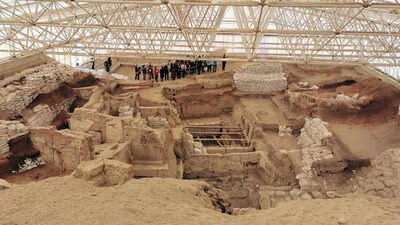
In a recent study published in Science, researchers have uncovered genetic evidence suggesting that
Catalhoyuk
, one of the oldest and best-preserved
Neolithic settlements
located in southern Anatolia (modern-day Turkey), was likely a matriarchal society.
DNA analysis
of over 130 skeletons buried beneath the city's mudbrick houses reveals a strong pattern of maternal lineage shaping family and social organisation. Women remained in their households across generations, while men often married in. The findings challenge long-held assumptions about early human societies and highlight the powerful role of women in shaping prehistoric civilisation.
Women at the centre: genetic evidence of female-led households
At Catalhoyuk, more than 395 skeletons were discovered beneath the floors of 35 houses, dating from around 9000 to 8000 BCE. Using cutting-edge DNA sequencing, researchers found that in the early phases of the city, family members, often genetically related, were buried together. Over time, however, the burials showed fewer biological ties, except when tracing through the maternal line. This matrilineal pattern indicates that women were the anchors of each household, while men likely moved in after marriage. Female descendants were more likely to stay connected to their ancestral homes, which is a key sign of matrilocal living.The study also revealed a striking difference in how men and women were treated after death. Graves belonging to women were found to contain five times more goods than those of men, suggesting not only reverence but possibly elevated social roles. Combined with the discovery of numerous female figurines, believed to be representations of a “Mother Goddess,” the findings point to a society that revered women both spiritually and socially.
Rethinking ancient power structures
Researchers believe these revelations urge us to rethink assumptions rooted in modern, often Western, frameworks of patrilineal dominance. Study co-author Dr. Eline Schotsmans highlighted that many ancient and Indigenous cultures have operated through matrilineal systems, where identity, land, and lineage are passed through the mother's line. Catalhoyuk now joins a growing list of
ancient societies
, including late Iron Age communities in Britain, where women may have held significant control over property, kinship, and identity.These insights not only reshape our view of gender roles in prehistory but also illuminate the diverse ways in which human societies have been organised across millennia.

 7 hours ago
45
7 hours ago
45



























 English (US)
English (US)